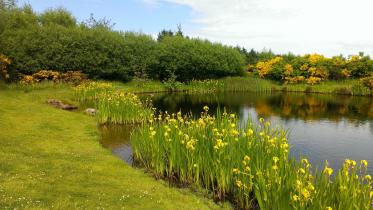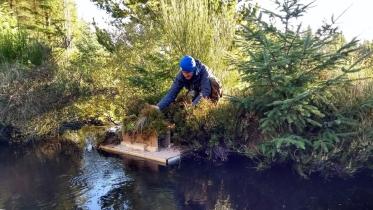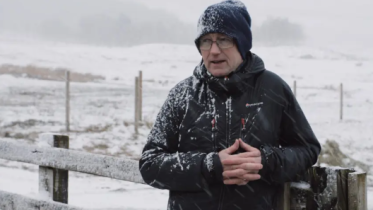30 by 30 explained
Background on 30x30 to help inform the co-design of Scotland's 30x30 framework
30x30 is the commitment to protect at least 30% of land and sea for nature by 2030
Nature has been impacted by climate change and other direct pressures, resulting in a loss of biodiversity, especially over recent decades. There has been a 24% decline in the average abundance of recorded species in Scotland since 1994.
In Scotland, nature – all use of the land and sea - must contribute to at least 40% of the transition to net zero. This is based on the fact that around 40% of the latest greenhouse gas inventory (June 2021) is concerned with land use, namely wetlands, woodlands and farming.
To prevent reverse biodiversity decline and bolster resilience to climate change, scientists warn that we must protect at least 30% of our lands, rivers, lakes, wetlands and sea by 2030.
The challenge
A global target to protect 30% of the planet for nature by 2030 (known as ‘30x30’) is included in the Kunming-Montreal Global Biodiversity Framework, and was agreed at the Convention on Biological Diversity (CBD) at COP15. Countries are expected to contribute to this global goal through domestic action to increase coverage of effectively managed protected areas. More than 100 countries have now signed up to the commitment, including the UK.
This aligns with the EU Biodiversity Strategy for 2030 which commits to legally protect a minimum of 30% of the EU’s land area.
The Scottish Government 2020 Statement of Intent on Biodiversity outlined the commitment to protect at least 30% of our land and sea for nature by 2030 and commissioned NatureScot to develop and publish a National Framework and Implementation Plan for terrestrial delivery of 30x30 in Scotland. This commission covers the delivery of 30x30 on land (including freshwater and coastal sites) and does not cover marine. This project has been developed alongside that of Nature Networks and is key in the delivery of the Scottish Biodiversity Strategy and contributing to the wider Environmental Strategy. Effective delivery of this target will significantly contribute towards tackling the nature and climate emergency.
Current state
Globally, only 15% of land and freshwaters are protected. In Scotland, protected areas cover around 18% of land consisting of designated sites such as Sites of Special Scientific Interest (SSSI), Special Areas of Conservation (SAC), and Special Protected Areas (SPA). If existing National Parks were included, this increases to 23%. This means we need an increase of 7-12% to reach 30% by 2030. For comparison, 37% of Scotland’s seas are protected.
There are currently over 1,800 protected areas for nature in Scotland. These areas protect wildlife as well as ecosystems at various scales. They also help protect vital services that nature provides for people. Currently 78% of habitats, species and geological landforms within the sites are in favourable condition.
The top pressures affecting the condition of designated sites in Scotland are invasive species, overgrazing and water management.
Ambitions
Target 3 in the Global Biodiversity Framework “Ensure and enable that by 2030 at least 30 per cent of terrestrial, inland water, and of coastal and marine areas, especially areas of particular importance for biodiversity and ecosystem functions and services, are effectively conserved and managed through ecologically representative, well-connected and equitably governed systems of protected areas and other effective area-based conservation measures, recognizing indigenous and traditional territories, where applicable, and integrated into wider landscapes, seascapes and the ocean, while ensuring that any sustainable use, where appropriate in such areas, is fully consistent with conservation outcomes, recognizing and respecting the rights of indigenous peoples and local communities, including over their traditional territories”. For Scotland 30 by 30 sites are made up of Protected Areas and Other Effective Area-based Conservation Measures.
Scotland have committed to delivering the substance of the target.
Through the co-design approach, and a number of 30x30 workshops, a draft framework has been designed and developed to deliver this target. The framework includes the vision, key principles, criteria, and approaches for protection, designation, governance, monitoring and management as well as policy linkages. The goal of the framework is to produce more effective area-based conservation, delivering greater improvements for nature across better-connected areas. It will be put for public consultation later this year before final publication.




